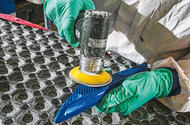Hand sanding, or ‘blocking’, to create a perfect finish and a keyed surface for the topcoat, is done using small compressed air-powered sanders
Expensively made carbonfibre cars need to look their resplendent best. We meet the man who ensures they do
A clear, high-gloss finish on a natural carbonfibre surface can look gorgeous but is notoriously difficult to achieve. However, after 15 years of intensive research and development, British company Project 12 has invented a new process enabling it to achieve just that.
Not surprisingly, the unique finish, called ‘Visual Carbon’, has proved so popular that the company is busy serving an impressive list of premium customers including Aston Martin, McLaren, Singer and Brabham.
Like so many good ideas, this one came about almost by chance. Visual Carbon is the brainchild of Dave King, boss of Carbody Ltd, an accident repair specialist in Banbury. A few years ago, King, who started in the bodyshop business after leaving school, was looking for ways to expand the business’s portfolio beyond repairing crashed cars. Then a request to accurately paint colour swatch cards for customer displays in dealer showrooms set the ball rolling. “I developed a way to hold each sheet of card on a plate so we could paint larger volumes,” explains King.
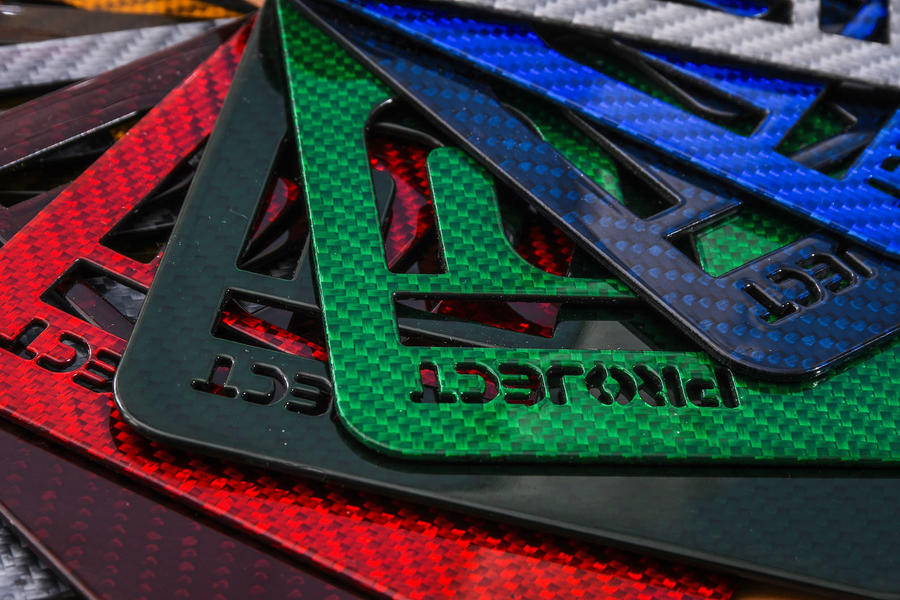
Word got around and eventually a call came from a major car manufacturer wanting a robust, high-quality clear lacquer finish on a carbonfibre component. King started researching the task and discovered there was no established industrial process for doing it. “There was no go-to guy for it and that was a lightbulb moment,” says King. “I had to try to become the go-to guy.” In 2006, Project 12 was formed, taking its name from the number of the industrial unit in which it started life.
Until then, a shiny natural carbonfibre finish was usually achieved by polishing the surface of the carbonfibre, but doing so won’t create the deep, lustrous finish of lacquer. Carbonfibre is made by impregnating woven fibres of carbonfibre with resin, compressing it in a mould and then heat-curing it. A silicone-based release agent, used to free components from their moulds, gets trapped in tiny pores on the surface of the resin, repelling paint or lacquer and creating unsightly ‘fish eyes’. Finding a way of chemically cleaning the surface reliably without causing hidden damage to the integrity of the resin became a mission for King, and he commissioned a chemical company to help develop a special surface cleaner.
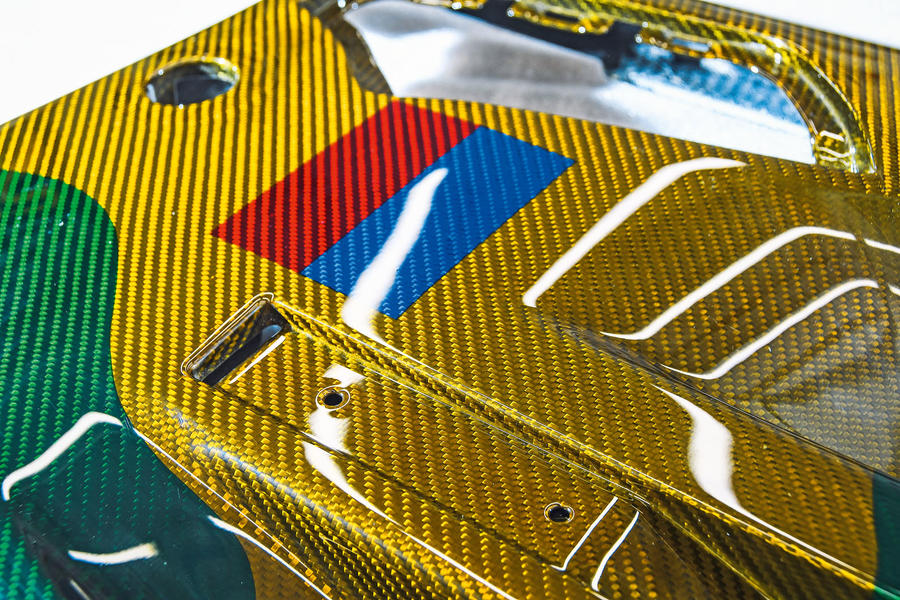
The second problem was getting the lacquer to adhere to the surface properly. Conventional metal surfaces are first sprayed with acid etch primer, which chemically grips the surface to provide a sound base for more primer and topcoats. That’s not possible with carbonfibre, so it has to be mechanically ‘keyed’ using abrasive paper. A relatively coarse grade is needed to produce a good enough key, but it’s easy to cut through the thin resin surface and damage the carbon fibres, in turn wrecking the component.
As an alternative, friend and former BAR-Honda F1 chief mechanic turned carbonfibre sculptor Alastair Gibson suggested ‘vapour matting’ in which vapour-blasting machines use a mixture of water and blast media comprising tiny glass beads. The process looked promising so King worked with a blast media manufacturer to develop a bespoke material and invested heavily in equipment.
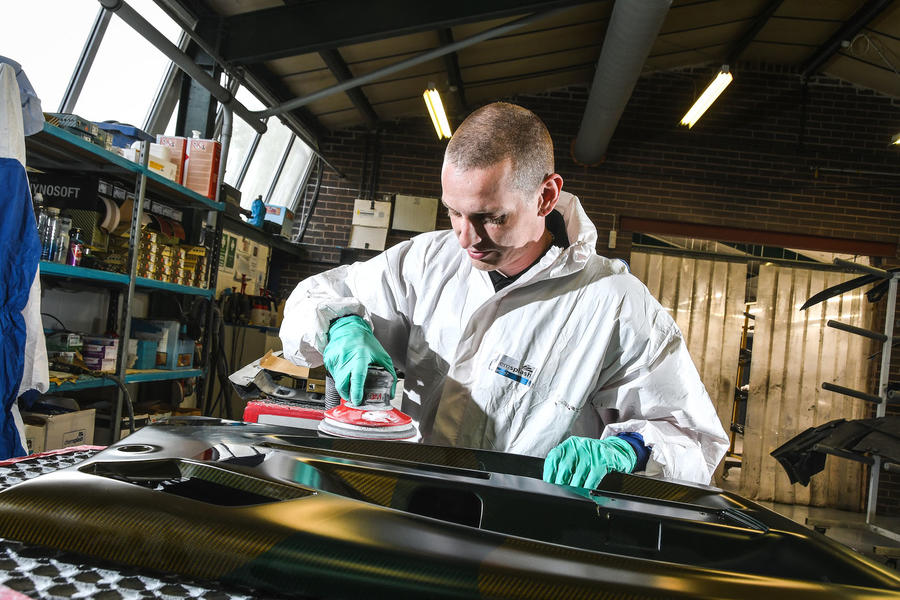
“We weren’t there yet, though,” says King. “Some of the larger components were still at risk of damage.” The high-pressure jet was too concentrated and King figured out that although his new abrasive media was right, the process was wrong. “It was frustrating,” he continues. “I’d been wasting money trying to find the holy grail of carbonfibre finishing for 10 years. Then I had another light-bulb moment.” What was needed, he reasoned, was a large blast nozzle that delivered a high volume of media while giving the control of a conventional, smaller nozzle. Again, King worked with a blast machine manufacturer to develop bespoke dry-blasting kit and eventually he’d cracked it.
The lacquer finish is applied like any other automotive paint in a spray booth, starting with a clear primer which is then carefully sanded by Project 12’s skilled staff. Once the topcoat of clear lacquer is applied, it’s hand polished and inspected by the quality control team, who King jokingly refers to as the “Profit Prevention Department”, because they can spot the slightest imperfection.
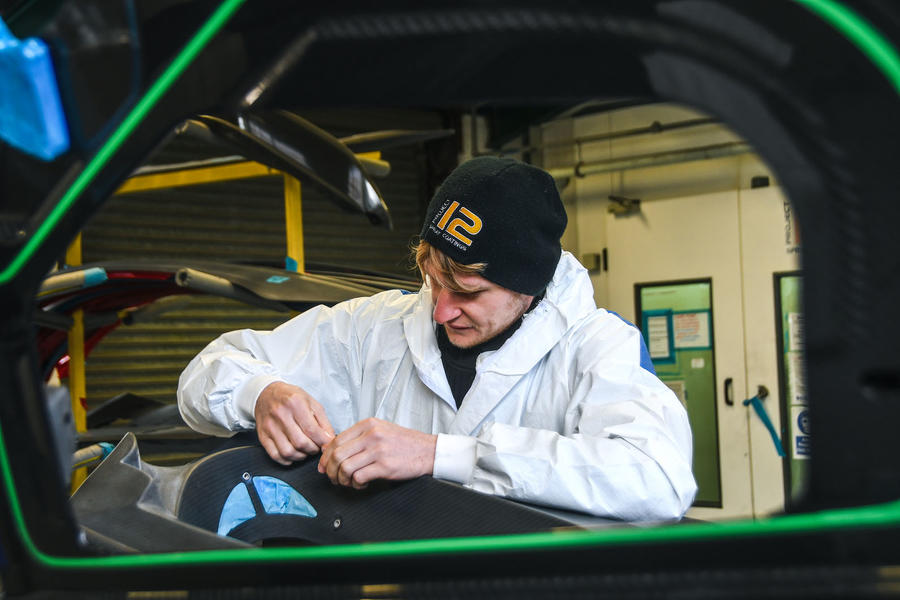
Finishes can be clear gloss or satin, and they also act as an ultraviolet filter to prevent the yellowing that normally afflicts carbonfibre over time. Satin is the most challenging because imperfections cannot be polished out, so the finish must be perfect straight from the spray gun. Both gloss and satin finishes can be colour-tinted, producing a subtle but far more vibrant result compared with the traditional method of tinting the resin itself.
King hasn’t finished yet and is developing a new process to apply gold leaf below the lacquer, but after 15 years, several hundred thousand pounds spent and approval for his processes by the National Composite Centre, he has achieved his main goal. With his crack team behind him, he’s now the go-to guy for stunning carbonfibre finishes.
The visual carbon process – step by step
1. Silicone-based release agent used when the carbonfibre component is moulded is cleaned from the surface of the carbonfibre using Project 12’s specially developed chemical cleaner and degreaser.
2. The surface of the carbonfibre is mechanically keyed with a bespoke dry-blasting process, creating a matt finish to which the lacquer will adhere.
3. A clear primer is applied to the surface and sanded to a fine finish. Complex surface details which can’t be safely sanded are spot-blasted to key the surface ready for the topcoat.
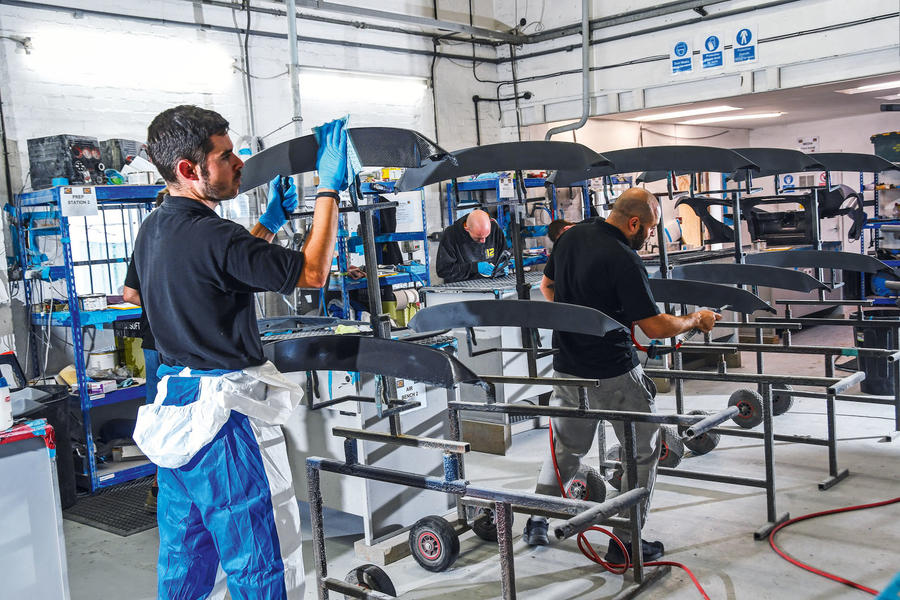
4. The surface is sprayed with a clear gloss, satin or colour-tinted lacquer. Depending on the carbonfibre weave, the finish can create a holographic effect, not unlike the jewellery-making Guilloché method of enamel over a mechanically turned finish.
5. The final surface is polished using a specially developed, nonabrasive black compound. Once finished, the lacquer protects the carbonfibre from the yellowing caused by ultraviolet light.
6. The finished piece is inspected for flaws, which are then corrected
Read more
Most extravagant optional extras you can buy
Behind the scenes with Britain’s vehicle diagnostics experts
Preserving the paint on a Ferrari F40
Source: Autocar
